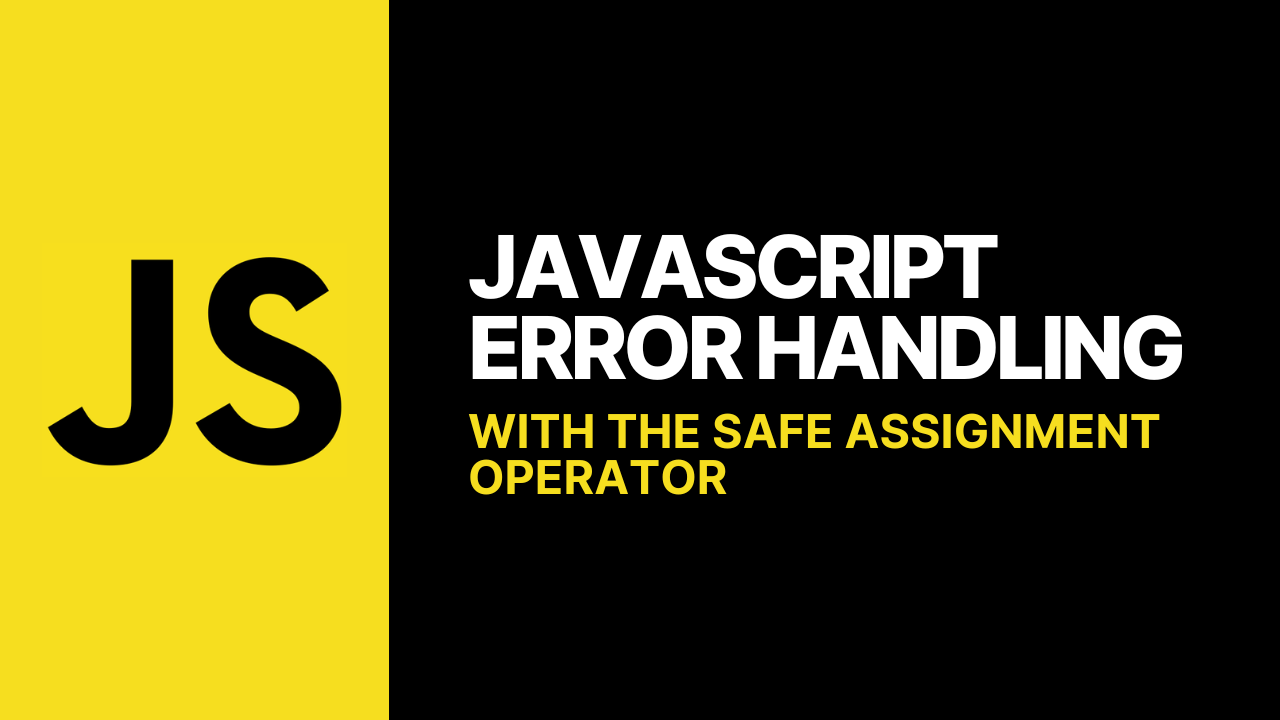Error handling in JavaScript can be frustrating and time-consuming. Those bulky try/catch blocks might work, but they clutter your code and make debugging harder, especially in larger projects. I've found a much better solution - the Safe Assignment Operator (?=).
The Problem with traditional error handling
Most JavaScript developers handle errors like this:
try {
const result = potentiallyFailingFunction();
// Code that uses the result
} catch (error) {
console.error('An error occurred:', error);
}
This approach creates unnecessary code bloat, makes your code harder to read, becomes messy when you have multiple potential failure points, and complicates debugging with all the extra syntax.
The solution: safe assignment operator (?=)
The Safe Assignment Operator simplifies error handling by handling exceptions directly within the assignment:
const result ?= potentiallyFailingFunction();
That's it! If potentiallyFailingFunction() fails, result will simply be undefined instead of crashing your application.
How to use the safe assignment operator
Here are practical ways to implement this solution in your code:
For non-critical operations where you just want to prevent crashes:
const userData ?= fetchUserData();
Provide fallbacks for when operations fail:
const config ?= getConfig() || defaultConfig;
Check if the operation failed and take appropriate action:
const data ?= fetchData();
if (!data) {
console.warn('Could not retrieve data');
// Implement alternative logic here
}
When to use (and when not to use)
The Safe Assignment Operator is perfect for API calls where failures are expected occasionally, loading non-critical configuration, parsing potentially malformed data, and reading from storage that might not exist.
However, it's not recommended for critical operations like payment processing, authentication and security functions, data validation where you need specific error details, or operations where you need to know exactly why something failed.
For these critical cases, stick with traditional error handling:
try {
processPayment();
} catch (error) {
logError(error);
notifyUser('Payment failed: ' + error.message);
}
Real-world examples
Function for fetching user preferences:
function loadUserSettings() {
const settings ?= JSON.parse(localStorage.getItem('userSettings'));
return settings || getDefaultSettings();
}
API data retrieval:
async function displayUserData() {
const userData ?= await fetchUserProfile(userId);
if (userData) {
renderProfile(userData);
} else {
showDefaultProfile();
}
}
Common mistakes to avoid
Always check if the operation failed for important operations. Don't replace all error handling with ?=. Provide defaults when appropriate. And don't ignore critical errors - still log important failures.
Summary
The Safe Assignment Operator (?=) gives you a cleaner, more efficient way to handle errors in JavaScript. By implementing this approach, you'll write more concise, readable code, reduce debugging complexity, improve code maintainability, and handle errors more elegantly.
Start using the Safe Assignment Operator in your next project, and you'll immediately notice cleaner code and smoother error handling. Just remember to use it appropriately - for critical operations, traditional try/catch blocks still have their place.



